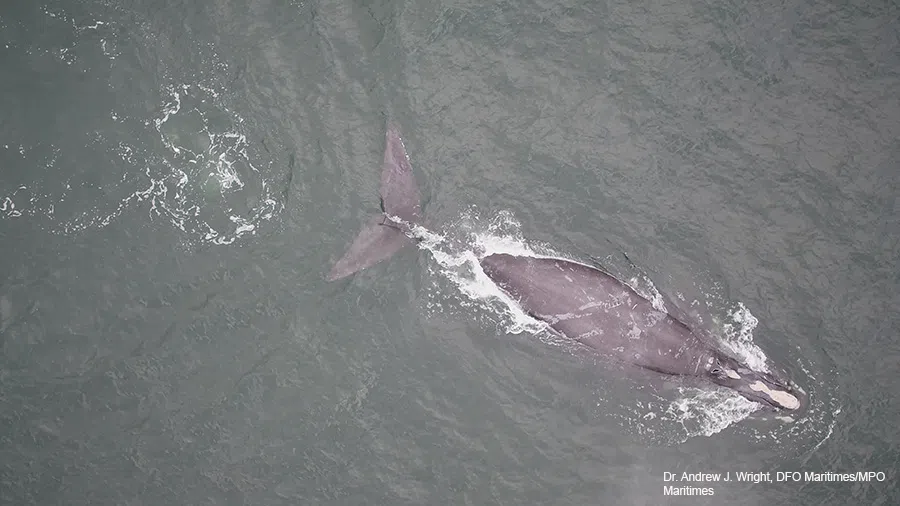
A file photo of a North Atlantic right whale. Image: DFO/Dr. Andrew J. Wright
The Canadian government has renewed a series of regulations for 2024 to protect the North Atlantic right whale, focusing on minimizing risks from fishing gear and shipping traffic.
The approach maintains the previous year’s strategies to prevent entanglements and collisions—primary threats to these whales.
The measures include the use of adaptive closure protocols, which adjust fishing restrictions in areas like the Gulf of St. Lawrence and the Bay of Fundy based on whale sightings. This year, vessel traffic management will also continue, with speed limits in whale-dense areas to reduce the risk of strikes, starting April 17.
Alongside these, commercial fishers will adhere to gear marking and reporting requirements to enhance the tracking and recovery of lost gear, a step towards reducing accidental whale entanglements.
Reflecting on the government’s initiative, Fisheries Minister Diane Lebouthillier highlighted the importance of balancing whale protection with the economic interests of coastal communities. She noted the positive trend in the whale population as a sign of the measures’ effectiveness.
The Honourable Pablo Rodriguez echoed the sentiment, stressing the role of collaboration between the fishing and marine transport sectors in supporting both industry and marine conservation.
In 2023, the North Atlantic Right Whale Consortium’s report indicating a slight increase in the whale population to 356 suggests these measures may be contributing to the species’ stabilization. This effort aligns with Canada’s commitment under the Species at Risk Act, marking a continued effort to support the recovery of the North Atlantic right whale while ensuring the sustainability of maritime industries.






